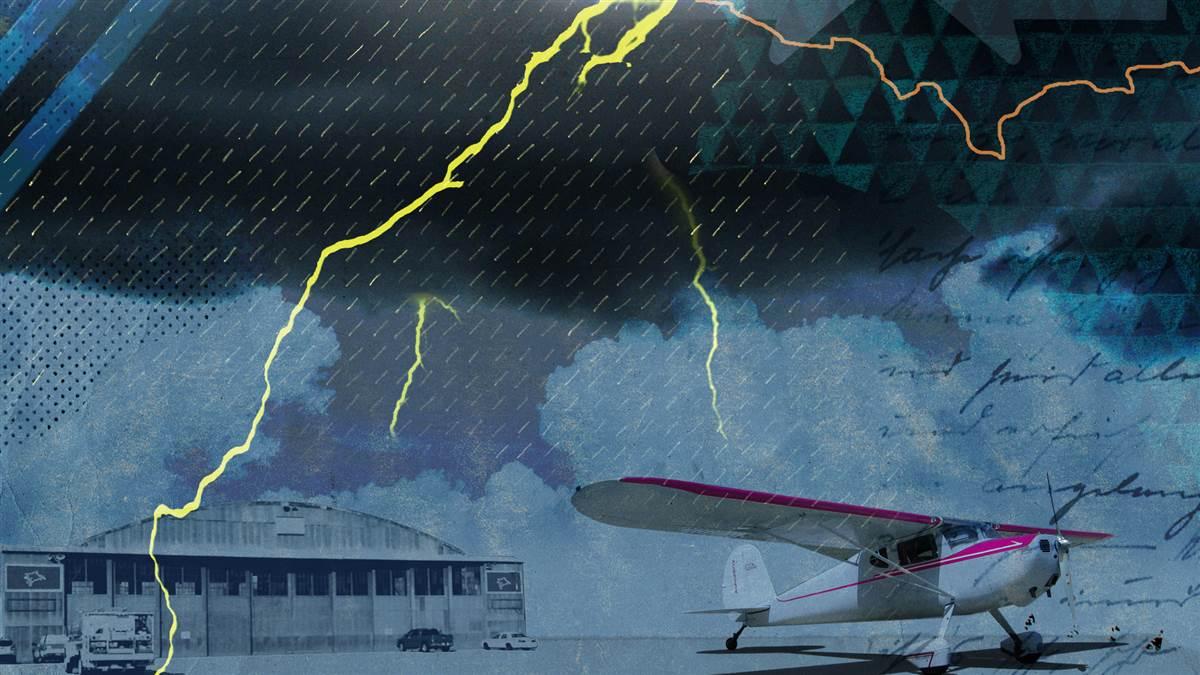Musings: Failure to launch
My first ferry flight ends with a bashed ego, but a rusty pilot restored

A quick call with the owner revealed the airplane, built in 1946, has been in the same family since 1964. My two biggest concerns were the reliability of an airplane that had not flown in five years because of the owner’s knee surgery (although it was in annual), and Hurricane Rosa pushing northeast through New Mexico after its landfall in the Baja Peninsula in October 2018. It would be my first job ferrying an aircraft since I earned my commercial certificate earlier in the year.
Two days later I was in Nashville meeting with the owner and carefully preflighting the airplane. Paperwork checked, and with a portable radio and iPad on the passenger seat, preparations were complete. I did a thorough engine runup and made a lap around the pattern to make sure this 72-year-old airplane was really ready to launch on a 1,150-mile flight to the Sandia Mountains east of Albuquerque. No squawks, no leaking fluids, nerves settling down, I headed west.
I had to fly across Texas to avoid low clouds and rain on the eastern edge of what was now called Tropical Storm Rosa blocking my way through Oklahoma. I flew over the gorgeous Ouachita National Forest and over cottony layers of scattered clouds, happy in the moment and growing more confident in the airplane with each passing mile. By the end of the second day, I was racing the southern edge of Rosa to get to Amarillo before severe thunderstorms arrived. However, showers were already popping up ahead of me and low-level wind shear was forecast, so Childress Municipal Airport looked like my best option for the night.
On my way to the hotel, the skies burst open with what I could only describe as a Texas-sized thunderstorm. Winds were gusting to 45 knots, and angry black clouds shot out tentacles of lightning into the darkening sky at a pace I had rarely seen before. Hmm, I hope the 140 is doing OK on the ramp back at the airport.
I could barely sleep that night. Excitement about finishing the trip, mixed with concern for the condition of the airplane, along with a stomachache from eating too much barbecue pork and chicken-fried steak that day, convinced me to get out to the airport before dawn. As I approached the airplane, I could see that one of the tie-down ropes had snapped and the airplane had weathervaned into the wind. Not a good sign. But I couldn’t find any water in the fuel, the flight controls were free, and nothing was bent, so it was time to go. All loaded up, I pulled the starter cable and…nothing. Dead.
A call to the owner with a query on similar gremlins in the past yielded a suggestion to gently tap the battery solenoid with something solid. A metal chock would have to do. Gentle tap...nothing. Moderate tap…nothing. Frustrated bang!…battery power was restored and the engine roared to life. Amazing.
I taxied to the runway with full carburetor heat because the humidity was high. The runup was normal. I was ready for the final leg of the flight. Albuquerque by noon! The terrain was steadily rising now in North Texas. I climbed to 5,000 feet, leveled off, pulled the throttle back to cruise power, and the engine immediately ran rough and lost another 400 rpm. I pulled on carb heat but there was no effect, and power was not being restored as is usual with carb ice.
Back to full throttle. I wasn’t losing much altitude, but I couldn’t climb any more, and rpm was slowly dropping. Checking mags, mixture, and switching fuel tanks had no effect. It was time to get on the ground before things got worse.
The owner (a retired FedEx Airbus captain) had the foresight to advise me to follow highways as I approached the desert, even if the routing was not direct. Fortunately, I had followed his advice and was over Route 287. As I eyed the busy highway and mentally prepared for an off-airport landing if the engine quit, I noticed on the iPad that North Texas has many little crop-duster airstrips to service its cotton fields. My salvation came in the form of an unattended strip 15 miles away in Memphis, right next to the highway.
It was not my most elegant tailwheel landing, but I was thrilled to be safely on the ground.
The owner, who had left Nashville in his motorhome at the same time I did, was only one hour away from Memphis on Route 66. With the closest mechanic 80 miles away and no way to diagnose the problem, the decision was made to drop me off at the Amarillo airport. Somewhat dejected, I flew home. Granted, the airplane was safe, but the mission was a failure.
But there is a silver lining.
With the airplane now only 300 miles from the owner’s new home outside Albuquerque, and his excitement about the cross-country adventure, he was inspired to renew his medical certificate and complete his flight review. After rebuilding the carburetor (the suspected culprit) the owner will triumphantly fly his family heirloom onto his 30-foot-wide airpark runway and bask in the glory of the accomplishment. I’m content that my failed ferry flight brought another rusty pilot back into the ranks of actively flying pilots.
Email [email protected]



